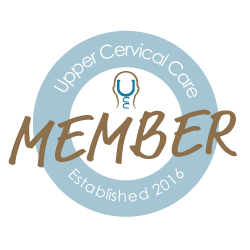Concussions are one of the most common types of head injuries, affecting millions of people every year, from athletes on the field to individuals involved in accidents. Though often categorized as a mild form of traumatic brain injury (TBI), concussions should never be taken lightly. The consequences of not adhering to proper concussion guidelines can lead to long-term cognitive, emotional, and physical issues, particularly if the injury is not managed properly.
Understanding Concussions
A concussion is a type of traumatic brain injury (TBI) caused by a blow or jolt to the head or body that disrupts the normal function of the brain. Concussions are often referred to as a “mild” TBI because they don’t usually result in permanent brain damage. However, they can still have significant and sometimes long-lasting effects on a person’s health and well-being.
While concussions don’t always show up on imaging tests such as CT scans or MRIs, they can cause a range of symptoms that affect brain function. These may include headaches, dizziness, memory loss, confusion, sensitivity to light or sound, and mood swings. The severity and duration of these symptoms vary from person to person, and recovery can range from a few days to several months.
Why Are Concussion Guidelines Important?
Adhering to proper concussion guidelines is crucial for a few key reasons:
- Preventing Further Injury: A second concussion, especially if sustained before the first one has healed, can lead to a potentially fatal condition called second-impact syndrome, where the brain swells rapidly and causes permanent damage.
- Promoting Safe Recovery: Following the correct steps can ensure a safer and more effective recovery process. Mismanagement of a concussion can lead to prolonged symptoms and increase the risk of long-term issues such as post-concussion syndrome (PCS).
- Improving Brain Function: Proper rehabilitation according to concussion guidelines can help restore normal brain function faster, allowing individuals to return to their daily activities without exacerbating symptoms or setting back recovery.
Because the brain is highly sensitive, recovery from a concussion must be managed carefully and according to established guidelines.
Key Concussion Guidelines for Safe Recovery
The Centers for Disease Control and Prevention (CDC) and other medical organizations have developed comprehensive guidelines to help manage and treat concussions. These guidelines emphasize the importance of proper diagnosis, monitoring, and a gradual return to activity.
Here are the key elements of concussion guidelines that should be followed for a safe and successful recovery:
1. Initial Diagnosis and Immediate Care
The first step in managing a concussion is a thorough diagnosis. This includes understanding the mechanism of injury, identifying symptoms, and ruling out more severe forms of brain injury. If there is any suspicion of a concussion, the person should immediately stop any physical activity and seek medical evaluation.
Signs to watch for include:
- Loss of consciousness (though not all concussions involve a loss of consciousness)
- Headache or a feeling of pressure in the head
- Nausea or vomiting
- Dizziness or balance problems
- Confusion or memory loss
- Sensitivity to light or noise
- Mood changes, irritability, or emotional distress
If any of these symptoms appear after a blow to the head, it’s important to seek immediate medical attention. A healthcare professional will assess the severity of the injury and provide guidelines for the next steps.
2. Rest and Observation Period
After a concussion, it is crucial for the individual to rest both physically and mentally. The brain needs time to heal, and overexertion can delay recovery or worsen symptoms. For the first 24 to 48 hours after the injury, it is generally recommended to:
- Rest in a quiet, dark room
- Avoid screen time, including watching TV or using a computer, as it can strain the brain and worsen symptoms
- Get plenty of sleep to allow the brain to repair itself
Physical rest is important, but so is cognitive rest. Avoiding activities that require intense thinking or concentration, such as reading or working, can help the brain recover. During this time, it is also important to monitor for any worsening symptoms, such as increased confusion, prolonged nausea, or worsening headaches. If these symptoms occur, seek medical attention immediately.
3. Gradual Return to Physical Activity
Once the initial rest period is over and the individual feels symptom-free at rest, they can begin a gradual return to physical activity. The CDC and other experts recommend a step-by-step approach, known as the Return-to-Play Protocol for athletes. This protocol ensures that the individual’s brain is fully recovered before returning to sports or intense physical activity. The same approach can be adapted for non-athletic individuals returning to work or daily activities.
Here’s a general outline for returning to physical activity:
- Step 1: Light aerobic activity – Begin with light exercise, such as walking or stationary cycling, for 5 to 10 minutes. This should be done in the absence of any concussion symptoms.
- Step 2: Moderate aerobic activity – Increase the duration and intensity to 15 to 20 minutes of moderate exercise, such as jogging or swimming.
- Step 3: Sport-specific activities – If the individual is an athlete, they can start sport-specific drills that don’t involve contact, such as dribbling or running drills.
- Step 4: Non-contact practice – This step involves returning to practice or work with no physical contact involved.
- Step 5: Full activity – Once the individual can handle non-contact practice or daily activities without any recurrence of symptoms, they can safely return to full activity.
The most important thing to remember is that each step should take at least 24 hours. If any symptoms reoccur, the individual should stop immediately and return to the previous step.
4. Cognitive Rehabilitation and Rest
In addition to physical rest, cognitive rest is equally important during the recovery phase. Mental exertion can strain the brain and delay recovery. Individuals recovering from a concussion should limit activities that require intense concentration, such as:
- Reading
- Writing
- Schoolwork or job tasks
- Playing video games
- Using electronic devices like smartphones or computers
For students and workers, it may be necessary to modify the workload during the recovery process. Shortened hours or a modified schedule can help prevent cognitive overload while allowing the brain to heal.
As symptoms improve, individuals can gradually reintroduce cognitive activities, starting with short sessions and slowly increasing time spent on tasks.
5. Chiropractic Care for Concussion Recovery
Chiropractic care can play a significant role in the recovery process for concussion patients. Chiropractors focus on spinal alignment and the health of the nervous system, both of which are critical for overall brain function and healing. Misalignments in the spine, particularly in the cervical (neck) region, can exacerbate concussion symptoms such as headaches, dizziness, and neck pain.
Here’s how chiropractic care can assist in concussion recovery:
- Spinal Adjustments: Chiropractic adjustments can help restore normal alignment of the spine, particularly in the neck. This is important for reducing tension in the head and neck, improving circulation, and promoting better nerve function.
- Soft Tissue Therapy: Techniques such as myofascial release or trigger point therapy can help reduce muscle tension and pain in the neck and shoulders, areas that are often strained during a concussion.
- Balance and Coordination: Chiropractors can incorporate exercises to help improve balance and coordination, which are often affected by concussions. This can be particularly helpful for those who experience dizziness or vertigo.
- Holistic Care: Chiropractic care emphasizes a holistic approach to healing. Chiropractors can work with patients to develop a customized plan that includes nutrition, stress management, and lifestyle modifications, all of which support brain health and healing.
6. When to Seek Medical Attention
Although most people recover from a concussion with time and proper care, there are instances where more serious complications can arise. Seek immediate medical attention if any of the following occur:
- Loss of consciousness for more than 30 seconds
- Worsening headache or new, severe headache
- Seizures or convulsions
- Persistent vomiting
- Difficulty waking up or staying awake
- Confusion that worsens over time
- Weakness, numbness, or coordination problems
These could be signs of more serious conditions, such as bleeding in the brain, and should be addressed immediately by a healthcare professional.
Following Concussion Guidelines for Optimal Recovery
While a concussion may seem like a mild injury, it requires careful attention and adherence to concussion guidelines to ensure safe and effective recovery. Taking the necessary steps, such as rest, gradual return to activity, cognitive rehabilitation, and chiropractic care, can help individuals heal faster and reduce the risk of long-term symptoms or complications.
If you or someone you know is recovering from a concussion, Anatomy Chiropractic is here to support your journey. Our team of chiropractic professionals is trained in concussion management and can help you through every stage of recovery. From spinal adjustments to personalized care plans, we provide the tools needed to restore your health and well-being.
Contact us today to schedule a consultation and learn how we can assist you in your concussion recovery process.


